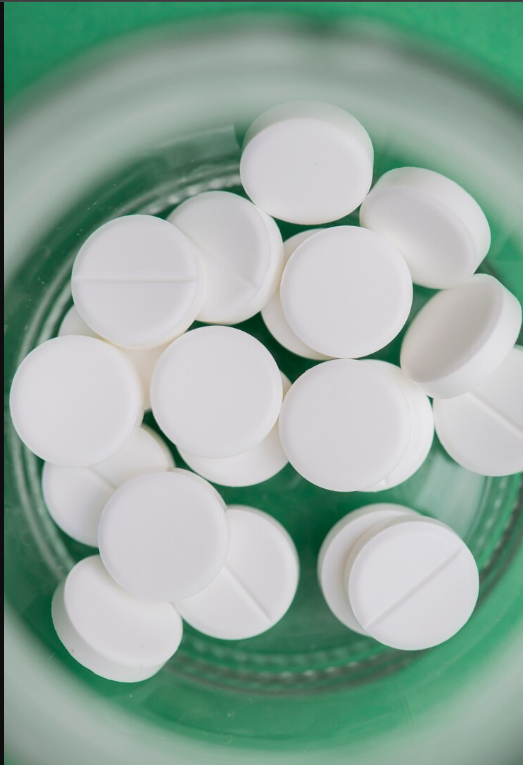Aciloc tablets, housing the active ingredient Ranitidine, are a valuable solution for treating gastric concerns such as peptic ulcers, gastric ulcers, and significant gastroesophageal reflux disease (GERD). Let’s embark on a journey to understand the benefits and potential side effects of Aciloc 150 Tablet, delving into its mechanism, uses, positive impacts, and safety advice.
Understanding The Mechanism: How Aciloc Works
Aciloc tablets reduce the production of stomach acid, placing it in the category of highly effective drugs for acid-peptic diseases. The active component, Ranitidine, blocks H2 receptors, which are instrumental in acid production. To comprehend this, let’s explore the intricate process of gastric acid release.
- Gastric acid release process: Gastric acid is produced by gastric parietal cells in the stomach lining. The activation of these cells involves the proton pump enzyme, H⁺K⁺ATPase, triggered by H2 receptors. When food is ingested, it interacts with gastrin, activating histamine release. This histamine, in turn, activates H2 receptors, further stimulating the proton pump and releasing gastric acid.
- Ranitidine intervention: Ranitidine acts by blocking H2 receptors, hindering the activation of the proton pump, and subsequently inhibiting gastric acid release. This mechanism addresses concerns like peptic ulcers, gastric ulcers, and GERD.
Key Points of The Aciloc Mechanism
- Ranitidine blocks H2 receptors.
- Inhibition of proton pump activation.
- Reduction in gastric acid release.
Uses of Aciloc 150 Tablet: A Multifaceted Approach
Aciloc 150 Tablet extends its therapeutic prowess in diverse conditions, showcasing its utility in various situations:
H2 blockade
- Acts as a competitive antagonist, blocking histamine-induced gastric release.
- Impacts cardiac stimulation, uterine relaxation, and bronchial relaxation.
Gastric ulcers
- Suppresses gastric release across basal, psychic, neurogenic, and gastric phases.
- Reduces volume secretion of gastric juice and pepsin content.
GERD (Gastroesophageal Reflux Disease)
- Decreases acidity of gastric juice, providing relief for mild GERD cases.
- Offers ‘on-demand’ symptom relief for occasional and stage 1 GERD.
Peptic ulcers
- Facilitates healing, with 60-80% of duodenal ulcers resolving within 4 weeks.
- Nightly single-dose intake for efficacy and relapse reduction.
Non-ulcer dyspepsia
- Addresses symptoms like epigastric pain, heartburn, abdominal fullness, and nausea.
Aciloc Benefits at a Glance
- Versatile applications for various gastric conditions: Aciloc 150 Tablet stands out for its versatility, offering a broad spectrum of applications to address various gastric concerns. From peptic ulcers to gastroesophageal reflux disease (GERD), it serves as a reliable ally in combating numerous gastrointestinal ailments.
- Effective in suppressing gastric release: One of the hallmark benefits of Aciloc 150 Tablet is its remarkable effectiveness in suppressing gastric release. By inhibiting the action of histamine-induced gastric secretion, it exerts a potent anti-secretory effect, reducing the volume and acidity of gastric juice. This suppressing gastric release is pivotal in alleviating symptoms associated with conditions like peptic ulcers and GERD.
- Promotes healing of peptic ulcers: Peptic ulcers pose a significant challenge to gastrointestinal health, often causing debilitating symptoms and complications if left untreated. Here, Aciloc 150 Tablet emerges as a beacon of hope, actively contributing to the healing process of peptic ulcers. Through its potent anti-ulcer properties, it facilitates the resolution of duodenal ulcers, with a significant percentage of ulcers showing signs of healing within a relatively short span.
Positive Impacts of Ranitidine: A Closer Look
Ranitidine, the powerhouse behind Aciloc 150 Tablet, brings forth several positive attributes
- Extended acid suppression: Boasts a longer duration of action, providing acid suppression for at least 24 hours.
- Potency: Highly potent in its acid-suppressing capabilities.
- Minimal side effects outside GIT: Little impact on functions outside the gastrointestinal system.
- Limited brain permeability: Exhibits lower permeability into the brain.
- Lower side effect incidence: Demonstrates a lower occurrence of side effects.
Aciloc side effects: Weighing the adverse effects
While the Aciloc 150 Tablet brings significant benefits, it’s crucial to acknowledge potential side effects. Adverse effects may include headaches, diarrhoea, constipation, dizziness, and stomach pain. These occurrences, however, are relatively infrequent and manageable.
Safety Advice for Aciloc Tablets: Navigating Precautions
Ensuring safe usage of Aciloc Tablet involves considering specific precautions and safety advice:
- Avoid alcohol: It is recommended to avoid alcohol consumption during medication.
- Safe in pregnancy: Deemed safe for use during pregnancy.
- Safe for breastfeeding mothers: Considered safe for breastfeeding mothers.
- Caution in kidney problems: Consult a doctor for caution in kidney problems.
- Consultation for liver issues: Seek a physician’s advice for dose adjustment in cases of liver problems.
- Preventive measures: Avoid citrus fruits, take the medicine before meals, and inform the doctor about any issues.
- Consultation is key: Refrain from self-medication and consult a doctor before initiating or discontinuing medication.
Aciloc Tablet, powered by Ranitidine, emerges as a versatile and effective solution for various gastric conditions. While reaping its benefits, it’s equally important to be mindful of side effects and adhere to safety advice for optimal healthcare outcomes. You can consult with your doctor and can buy these medicines online from several online medical stores.
















